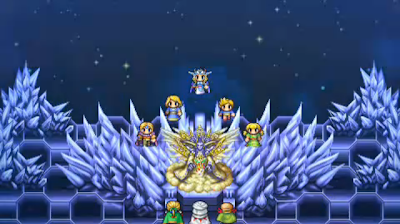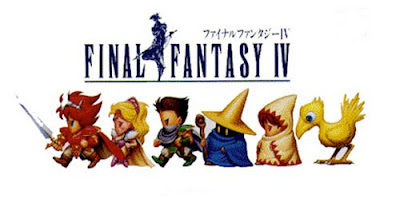
The party meets their loved ones.
In the Game Boy Advance and PlayStation Portable versions, a new story, titled Soul of Rebirth, told the tales of the four party members who died defending Firion and his party in an attempt to see the Emperor defeated.
Minwu wakes up to find himself in a mysterious cave and tries to figure out where he is. He later finds Scott, the prince of Kashuan, who had died earlier on in the game. After defeating a few soldiers, the two find Josef, who is confronted by a hideous zombie-version of Borghen. The three of them defeat Borghen, and start searching for answers about where they are. In the process of doing this, they find Ricard, who is fighting the Roundworm, and aid him in battle. He then joins Minwu's party. The party finds their way out of the passage, where they find that they are, in fact, in the afterlife. The town of Machanon was built as a safe house for all the souls trapped in this unknown dimension of the afterlife. Here, they find Cid, Tobul, and other rebels, who helped to build the place, and encourage the party to explore the other two mysterious portals that appeared in Machanon not long ago.
After adjusting themselves to the difficult battles of the afterlife, Minwu and the party enter one of the portals, and find themselves in the Chamber of the Seal, Minwu's resting place. Again, Minwu must break the seal; however, this time, he is powerful enough to break the seal without sustaining any fatal injuries. The party enters the chamber and attempts to claim Ultima, but are met with the guardian of the spell in the afterlife: the Ultima Weapon. After a fierce duel, the party is able to defeat the monster, and claim Ultima as their own.
This left one final portal, which lead to the Unknown Palace. Like Pandaemonium before it, the Palace is guarded by fierce creatures, and contains some of the most powerful equipment on the game within it. Specifically, Minwu's party find four exclusive pieces of equipment: the Stardust Rod (for Minwu), the Wild Rose (for Scott), the Bracers (for Josef), and the Wyvern Lance (for Ricard).
After all the battles, the party meets the Light Emperor, who then asks for forgiveness for the actions of his dark side. The Light Emperor tells them that he split into two entities when he was originally defeated, and that Firion and the party defeated the dark half in Pandaemonium. He also explains that they are actually in Arubboth, the passage to Heaven, and that they can finally rest in peace. The four are led to believe his words; however, the subconscious souls of their still-living friends and family appear and tell them that they must not be fooled by the Light Emperor, because in reality, he is just as evil as the Dark Emperor. The party recover their lost will to fight and defeat the Light Emperor. After his defeat, the four heroes return (at least in spirit) to Castle Fynn, where they witness the events that played out at the end of the regular game. These events are told from their perspective this time, and the player is given an explanation as to why Firion saw the ghosts of the four dead heroes at the conclusion of the regular game. The story ends with Minwu, Scott, Josef, and Ricard finally fading away, presumably going to Heaven for real this time.























